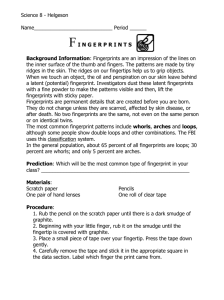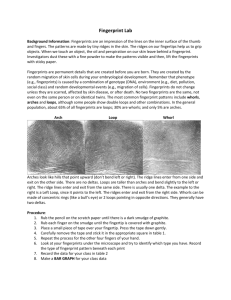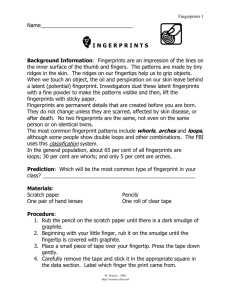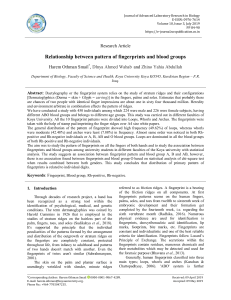Fingerprint Lab - Winston Knoll Collegiate
advertisement
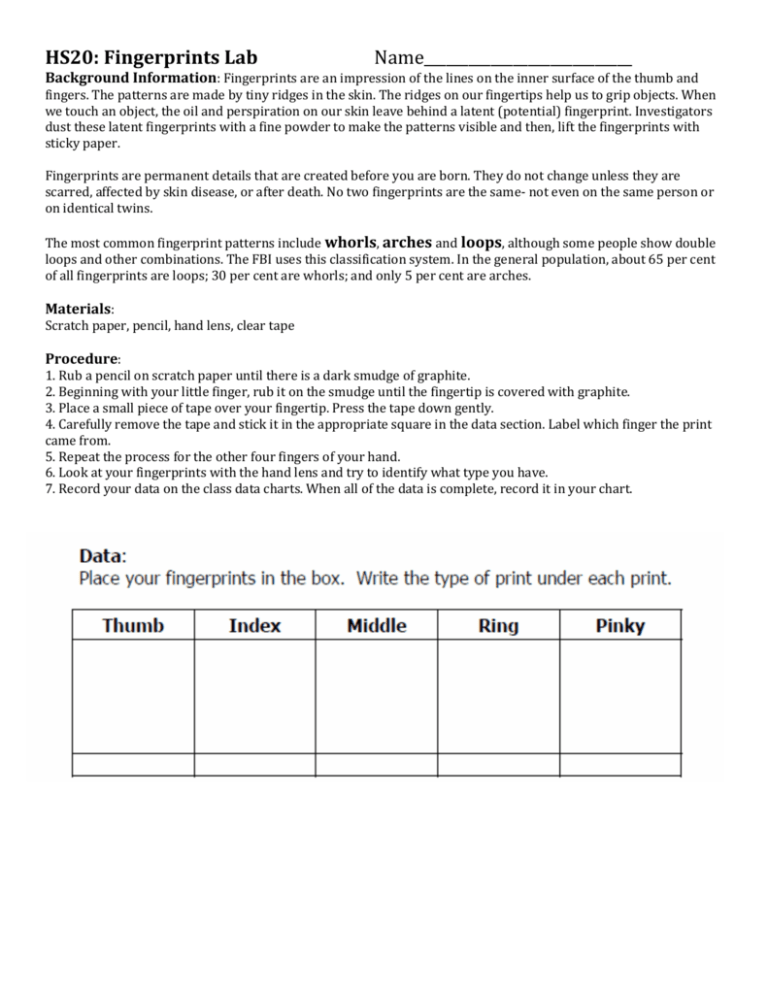
HS20: Fingerprints Lab Name____________________________ Background Information: Fingerprints are an impression of the lines on the inner surface of the thumb and fingers. The patterns are made by tiny ridges in the skin. The ridges on our fingertips help us to grip objects. When we touch an object, the oil and perspiration on our skin leave behind a latent (potential) fingerprint. Investigators dust these latent fingerprints with a fine powder to make the patterns visible and then, lift the fingerprints with sticky paper. Fingerprints are permanent details that are created before you are born. They do not change unless they are scarred, affected by skin disease, or after death. No two fingerprints are the same- not even on the same person or on identical twins. The most common fingerprint patterns include whorls, arches and loops, although some people show double loops and other combinations. The FBI uses this classification system. In the general population, about 65 per cent of all fingerprints are loops; 30 per cent are whorls; and only 5 per cent are arches. Materials: Scratch paper, pencil, hand lens, clear tape Procedure: 1. Rub a pencil on scratch paper until there is a dark smudge of graphite. 2. Beginning with your little finger, rub it on the smudge until the fingertip is covered with graphite. 3. Place a small piece of tape over your fingertip. Press the tape down gently. 4. Carefully remove the tape and stick it in the appropriate square in the data section. Label which finger the print came from. 5. Repeat the process for the other four fingers of your hand. 6. Look at your fingerprints with the hand lens and try to identify what type you have. 7. Record your data on the class data charts. When all of the data is complete, record it in your chart. HS20: Fingerprints Lab Name____________________________ HS20: Fingerprints Lab ANALYSIS AND CONCLUSIONS Name____________________________ 1. Class data (thumb only): Arches: Whorls: Loops: 2. Calculate the percent of the class had: Arches: Whorls: Loops: 3. Were the results similar to what we would expect to find in the general population? Explain.
